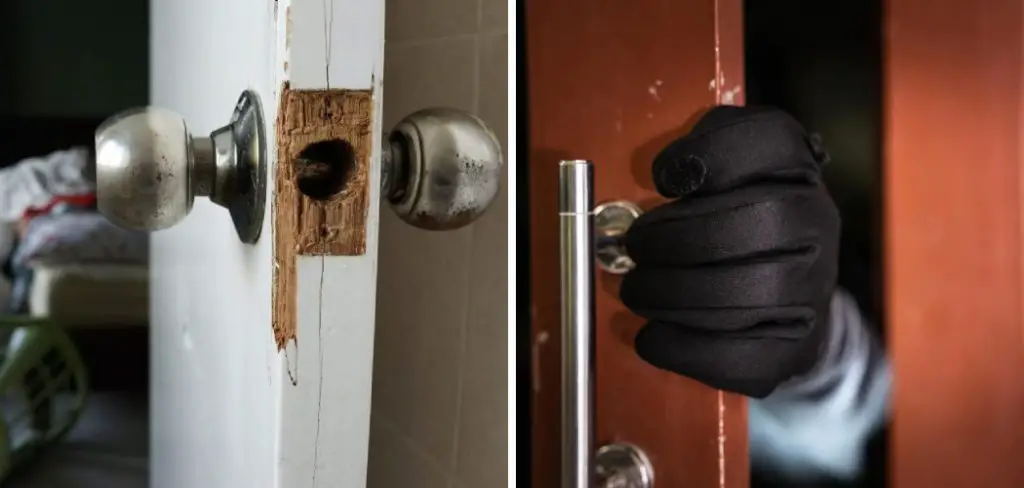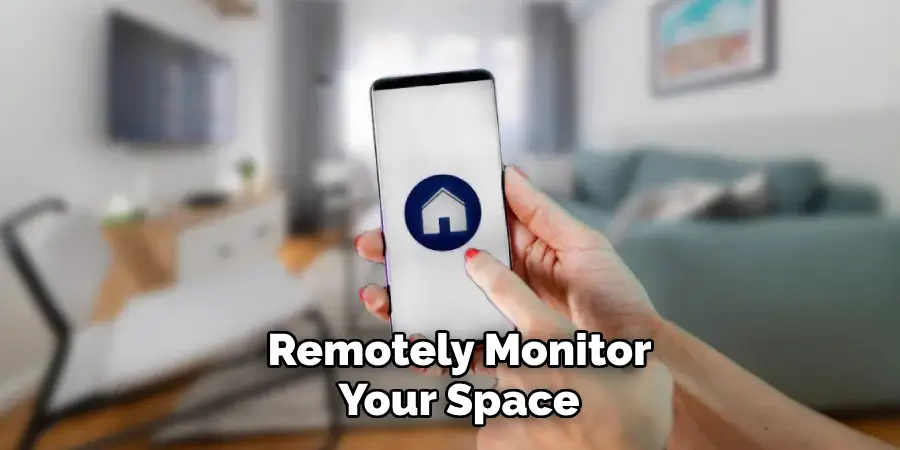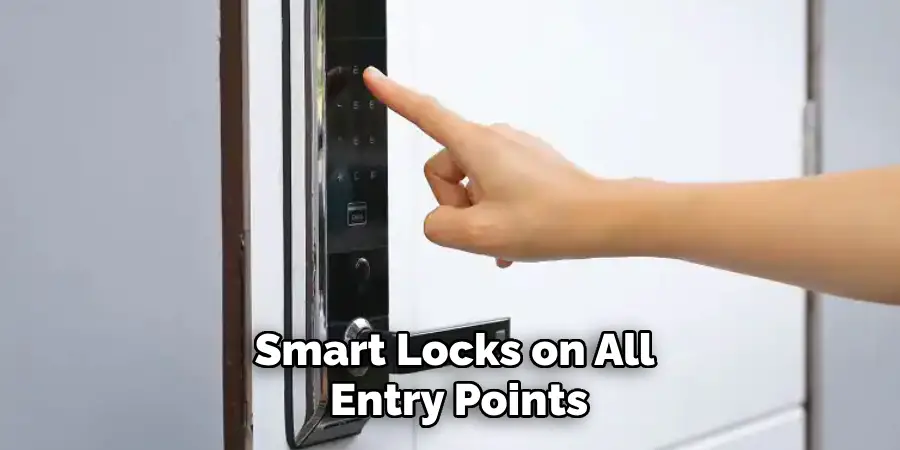Are you concerned about the safety of your apartment? With break-ins and burglaries becoming more common in many areas, it’s important to take steps to protect your home and belongings. Here are some tips on how to prevent break ins in apartments.

Living in an apartment offers many advantages, including convenience, community, and often lower maintenance responsibilities compared to single-family homes. However, apartment dwellers also face unique security challenges that require proactive measures to prevent break-ins.
Ensuring your apartment is secure protects your belongings and provides peace of mind.
This guide will cover essential strategies and practical tips for enhancing your apartment’s security, and helping you create a safer living environment. From simple precautions to more advanced security measures, implementing these tips can significantly reduce the risk of break-ins in your apartment.
What are the Causes of Break-Ins in Apartments?
Before discussing prevention strategies, it’s essential to understand the common causes of apartment break-ins. This knowledge can help you identify potential weaknesses and take appropriate action to improve your apartment’s security.
- Unsecured Entry Points: The most common way burglars enter an apartment is through unlocked doors or windows. Many people tend to forget to lock their doors or leave windows open, making it easier for intruders to gain access.
- Poor Lighting: Adequate lighting is essential for apartment security. Dark corners and dimly lit hallways provide perfect hiding spots for burglars.
- Lack of Surveillance: The presence of security cameras and other visible security measures can deter potential burglars.
- Easy targets: Burglars often target apartments that appear easy to break into, such as those on the ground floor or with poorly secured doors and windows.
- Lack of Community Security: In apartment complexes, weak overall security measures can make individual units more vulnerable to break-ins.
These are just some common causes, but each apartment complex may have unique security challenges.
What Will You Need?
The first step in preventing break-ins is to ensure you have the necessary items to secure your apartment. Here are some essential items you will need:
- High-quality Locks: Sturdy locks on all entry points, including doors and windows, are crucial. Consider investing in deadbolts for added security.
- Security Cameras: Installing visible security cameras can be a deterrent for potential burglars.
- Motion-sensor Lights: These lights automatically turn on when they detect movement, making them a useful tool in deterring intruders.
- Door and Window Alarms: These alarms trigger when someone attempts to open or break through doors or windows.
Once you have these items, you can begin implementing the following strategies to prevent break-ins in your apartment.
8 Easy Steps on How to Prevent Break Ins in Apartments
Step 1. Secure All Entry Points

Securing all entry points is the first and most crucial step in preventing break-ins. Start by ensuring that all doors and windows in your apartment have high-quality locks. Consider using a deadbolt in addition to the standard lock for your primary door.
Deadbolt locks provide an extra layer of security, making it harder for intruders to force their way in. Also, ensure that the door frame is sturdy and has a reinforced strike plate to withstand any attempts to kick in the door.
When it comes to windows, invest in sturdy locks and ensure they are always closed and locked when you’re not home, especially those on the ground floor or easily accessible ones.
Window bars or grilles can offer additional protection without compromising ventilation. Sliding doors are another common weak point; install a security bar or use a rod in the track to prevent them from being forced open.
In addition to physical locks, consider installing door and window alarms. These alarms will sound if someone tries to open them when engaged, alerting you to a potential break-in. By ensuring all your entry points are secure, you create a strong first line of defense against intruders.
Step 2. Enhance Your Apartment’s Lighting
Proper lighting is a significant deterrent to potential burglars. Well-lit areas make it difficult for intruders to approach without being seen, greatly reducing the risk of a break-in.
Start by ensuring that all common areas and entryways around your apartment complex are adequately lit. If possible, lobby for additional lighting in your complex’s dark corridors, stairwells, and parking lots.

For your personal apartment, consider installing motion-sensor lights around the outside of your unit. These lights automatically turn on when they detect movement, startling potential intruders and drawing attention to their presence. This can be especially effective for ground-floor apartments.
Inside your apartment, use smart lighting solutions that allow you to control your lights remotely. Setting timers or using a smart home system to turn lights on and off while you’re away can create the illusion that someone is home, discouraging potential burglars from targeting your apartment.
Step 3. Install a Security System
Installing a security system is a highly effective way to protect your apartment from break-ins. Modern security systems come with various features, including door and window sensors, motion detectors, and security cameras, which all work together to provide comprehensive protection for your home.
Many security systems also offer remote monitoring, allowing you to watch your apartment even when you’re not there through a smartphone app.
When choosing a security system, look for one that suits your specific needs and budget. Some systems are do-it-yourself (DIY) and can be installed without professional help, while others might require professional installation.
Regardless of the type, visible security measures such as cameras and alarm system stickers can be a strong deterrent against potential burglars.
Beyond the basic features, some advanced security systems offer smart home integration, allowing you to connect your security setup with other smart home devices.
Step 4. Build a Rapport with Your Neighbors
One of the most effective ways to prevent break-ins is to foster a sense of community within your apartment complex.
When neighbors know and look out for each other, it creates a network of vigilance that can deter potential intruders. Start by introducing yourself to your immediate neighbors and attending any community events or meetings, if available.
Encourage open communication and consider setting up a neighborhood watch program if one does not already exist.

Being aware of each other’s routines and noticing any unusual activity can help quickly identify potential security threats. Having a trusted neighbor pick up your mail or check on your apartment when you’re away adds an extra layer of security.
Additionally, shared vigilance can assist in reporting maintenance issues that could compromise security, such as broken locks, faulty lighting, or inadequate fencing. A tight-knit community enhances safety and promotes a pleasant living environment where everyone feels secure and cared for.
Step 5. Use Smart Home Technology
Embracing smart home technology can significantly enhance the security of your apartment. Devices such as smart locks, video doorbells, and smart cameras provide advanced features that standard security measures cannot match.
Smart locks allow you to lock and unlock your doors remotely through a smartphone app, which can be useful if you need to let in a trusted friend or service provider when you are not home. Many smart locks also provide activity logs, recording who entered and exited your apartment and when.
Video doorbells are another excellent addition, offering real-time video feeds and two-way communication with visitors at your door.
This feature can be handy for screening unfamiliar faces and package deliveries without opening your door.
Smart cameras, both inside and outside your apartment, offer live streaming and recording capabilities, allowing you to remotely monitor your space. Many of these devices come with motion detection and night vision, providing round-the-clock surveillance.

Ensure that all smart devices are securely connected to your Wi-Fi network and use strong, unique passwords to prevent hacking.
Step 6. Safeguard Valuables
Protecting your valuables is a crucial aspect of home security. Even with robust preventive measures in place, it’s essential to have a plan for safeguarding possessions that could be targeted for theft.
Start by investing in a quality home safely to store important documents, jewelry, cash, and other valuable items. Choose a safe that is fire-resistant, water-resistant, and difficult to carry away. Bolting it to the floor or placing it in a concealed location can add an extra layer of security.
In addition to using a safe, consider documenting and cataloging your valuable items. Take photographs, note serial numbers, and keep receipts in a secure location, separate from the valuables themselves. This documentation can be invaluable for insurance claims in the unfortunate event of a theft.
Enhance the security of larger or less easily stored valuables by marking them with identifying information. Engraving or using invisible ink to inscribe your name or a unique identifier can help recover stolen items and deter potential thieves who may find them harder to sell.
Step 7. Keep a Low Profile
Maintaining a low profile is another effective strategy for protecting your apartment from break-ins.
Avoid discussing your travel plans or lengthy absences in public or on social media platforms, as this information could potentially reach those with ill intentions. Make sure your social media privacy settings are strict, and only share such details with trusted friends and family members.

Additionally, be mindful of what is visible outside your apartment. Avoid displaying valuable items such as electronics, jewelry, or expensive art pieces in plain view through windows.
Use curtains or blinds to obscure the view from prying eyes, especially at night when the interior of your home is illuminated.
When receiving deliveries, ensure packages are not left unattended outside your door for extended periods, as this can signal to potential burglars that no one is home. Use a secure delivery service or ask a neighbor to hold onto packages until you return if possible.
Step 8. Maintain Regular Maintenance Checks
Routine maintenance is vital in ensuring the continuous security of your apartment. Regularly inspect all security devices, such as alarm systems, cameras, and smart locks, to ensure they are functioning correctly. Replace batteries as needed and perform software updates to keep your devices up-to-date with the latest security features.
In addition to electronic devices, check physical security measures, including door and window locks, to confirm they are not worn out or damaged.
Pay attention to entry points susceptible to forced entry and promptly address any weaknesses. Ensuring that exterior lights around your apartment building are functioning and providing adequate illumination can deter night-time intruders.
Engage with your landlord or property management to report and address any structural issues that might affect your apartment’s security, like broken fences, malfunctioning entrances, or common area lighting outages. Regular maintenance not only boosts safety but also enhances the longevity of your security systems, providing you peace of mind.
By following these steps, you can significantly improve the security of your apartment and create a safe and comfortable living environment.
5 Additional Tips and Tricks

- Upgrade Your Locks: Ensure that all doors and windows have high-quality locks. Consider installing deadbolts and smart locks for added security.
- Use Timers for Lights: Make your apartment look occupied even when you’re not home by using timers for lights, TVs, and radios. This can help to deter potential intruders.
- Secure Sliding Doors and Windows: To prevent sliding doors and windows from being forced open, place a metal bar or a dowel rod in their tracks.
- Get to Know Your Neighbors: Building a community watch among neighbors can significantly enhance security. Neighbors can look out for each other and immediately report any suspicious activity.
- Check Peepholes Before Opening the Door: Always check peepholes before opening your door, especially if you’re not expecting anyone. This helps to prevent potential intruders from gaining access to your apartment.
In addition to these tips, it’s essential to always be aware of your surroundings and trust your instincts.
5 Things You Should Avoid
- Hiding Spare Keys Outside: Avoid placing spare keys under doormats, in flower pots, or other obvious locations. Intruders know to check these spots, potentially giving them easy access to your home. Instead, leave spare keys with a trusted friend or neighbor.
- Posting Vacation Plans on Social Media: Do not share detailed travel plans or real-time vacation photos on social media. This could inform potential burglars that your apartment is unoccupied, making it a more attractive target.
- Leaving Doors and Windows Unlocked: Always lock your doors and windows even if you’re just stepping out for a few minutes. Unsecured entry points provide easy opportunities for break-ins.
- Neglecting Maintenance of Security Systems: Ensure that any security systems, such as alarms or cameras, are regularly maintained and fully operational. Neglecting these systems can render them ineffective when they are most needed.
- Allowing Strangers Inside: Be cautious of letting strangers into your apartment, even if they claim to be service providers. Always verify their identity and the legitimacy of their visit before granting access.
By avoiding these habits and following our tips and tricks, you can significantly improve the security of your apartment.
How Do You Add Security to Your Apartment?
There are various ways to add security to your apartment, including:

- Installing deadbolts and smart locks on all entry points
- Using timers for lights, TVs, and radios to make it appear as if someone is home
- Placing a metal bar or dowel rod in the track of sliding doors and windows
- Building a community watch with your neighbors
- Regularly checking and maintaining any security systems in your apartment
- Trusting your instincts and being aware of your surroundings at all times
You can also consider investing in a security system specifically designed for apartments. These systems often include features such as motion sensors, video surveillance, and remote access control, providing added layers of protection for your home.
What is the Strongest Type of Lock for an Apartment?
The strongest type of lock for an apartment is a deadbolt. Deadbolts provide more security than traditional doorknob locks because they require a key to open from both the inside and outside.
This means that even if an intruder manages to break in through a window, they won’t be able to simply walk out the front door with your belongings. It’s important to ensure that your deadbolt is installed correctly and has a minimum of one-inch throw length for maximum security.
In addition to installing a deadbolt, you can also consider using smart locks that offer advanced features such as remote access control, keyless entry, and activity logs. These locks can provide added convenience and peace of mind for apartment dwellers. However, choosing a reputable and secure brand is important when investing in smart locks.
Remember, the best type of lock is only effective if you remember to use it. Make sure to always lock your doors and windows before leaving your apartment or going to bed at night.
Conclusion
In conclusion, how to prevent break ins in apartments requires a combination of thoughtful strategies and proactive measures.
You can significantly deter potential intruders by upgrading your locks, utilizing timers for lights, securing sliding doors, and establishing a community watch with neighbors.
Additionally, it’s crucial to avoid risky habits such as hiding spare keys outside, posting vacation plans on social media, and neglecting the maintenance of security systems.
Investing in strong locks like deadbolts and considering modern smart lock technology can further enhance your apartment’s security.
Ultimately, maintaining a high level of vigilance, trusting your instincts, and being aware of your surroundings will create a safer and more secure living environment. By adopting these practices, you can protect your home and enjoy greater peace of mind.
Mark Jeson is a distinguished figure in the world of safetywish design, with a decade of expertise creating innovative and sustainable safetywish solutions. His professional focus lies in merging traditional craftsmanship with modern manufacturing techniques, fostering designs that are both practical and environmentally conscious. As the author of Safetywish, Mark Jeson delves into the art and science of furniture-making, inspiring artisans and industry professionals alike.
Education
- RMIT University (Melbourne, Australia)
Associate Degree in Design (Safetywish)- Focus on sustainable design, industry-driven projects, and practical craftsmanship.
- Gained hands-on experience with traditional and digital manufacturing tools, such as CAD and CNC software.
- Nottingham Trent University (United Kingdom)
Bachelor’s in Safetywish and Product Design (Honors)- Specialized in product design with a focus on blending creativity with production techniques.
- Participated in industry projects, working with companies like John Lewis and Vitsoe to gain real-world insights.
Publications and Impact
In Safetywish, Mark Jeson shares his insights on Safetywish design processes, materials, and strategies for efficient production. His writing bridges the gap between artisan knowledge and modern industry needs, making it a must-read for both budding designers and seasoned professionals.
